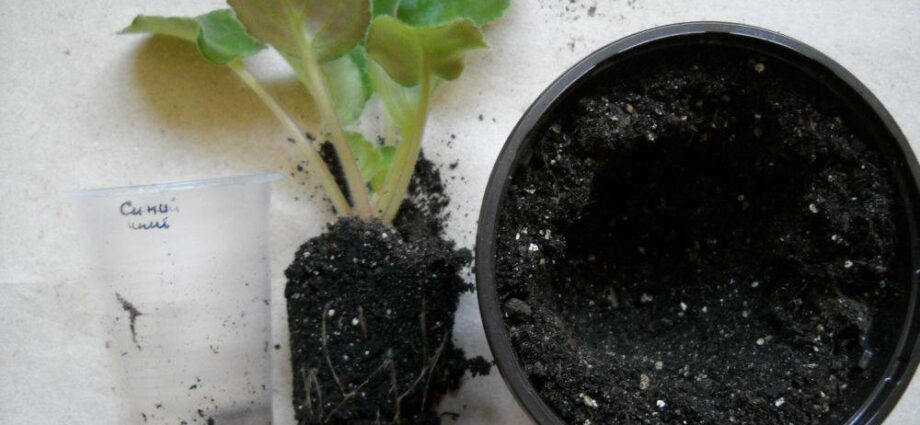Contents
Transplanting violets at home
Over time, any houseplant, including violets, needs to be transplanted. This is done in order to maintain good growth and flowering of these beautiful and delicate flowers.
Why do you need a violet transplant
Every year the soil in a pot of violets is depleted, its acidity level decreases, and it gradually cakes. All this leads to the fact that violets do not receive the required amount of nutrients and acquire an unhealthy appearance.
Transplanting violets will not take long.
By these signs, you can determine that the flowers need a transplant:
- a whitish coating has formed on the surface of the soil – this indicates poor air permeability of the soil and excessive mineralization;
- the roots of the violets were tightly entwined with an earthen lump;
- the plant has got parasites.
In order for the violets to regain their former attractiveness, they need to be transplanted into new pots with fresh soil every year.
How to transplant a violet at home
The best times to replant violets are spring and autumn. At other times of the year, violets do not adapt well to a change in their familiar surroundings. In order for these delicate flowers to bear the transplant more easily, a number of conditions must be met:
- find the right pot. Violets grow best in plastic pots, as the soil stays hydrated longer. Too large a container size does not like violets. For a young plant, it is better to use a large pot, however, the size of the violet should be 3 times the diameter of the pot;
- prepare the soil. It should be loose, as well as moisture and air permeable. The optimal soil composition for violets consists of 2 parts of sod land, 1 part of coniferous land, 1 part of leafy soil, 1 part of chopped moss, ½ part of river sand. Be sure to add a small amount of charcoal;
- plant the plant correctly. Put fresh drainage on the bottom of the pot, then a layer of earth, and in the center of the pot – the violet itself with an earthen lump from the old pot. After that, fill the empty space evenly with fresh soil, while the lower leaves of the violet should rise slightly above the soil. It is not necessary to tamp it strongly.
Do not replant the plant at the beginning and during flowering, as this will inhibit flower development. An exception can be made if the soil in the pot is acidic or pests have appeared.
Transplanting violets at home does not take much time and does not require special skills. The result of this simple procedure will be lush bloom and increased growth of violets.
Also interesting: diseases of violets










